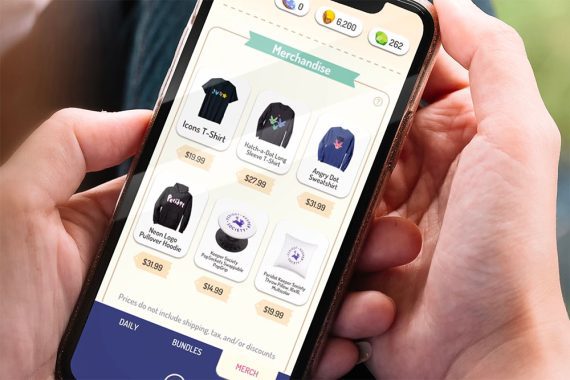Amazon Anywhere brings the company’s marketplace to games and apps, pushing forward the industry’s merging of virtual and augmented reality with mobile shopping.
Introduced earlier this month, Amazon Anywhere offers application developers a way to integrate products from the Amazon marketplace into VR/AR products, game environments, and apps in a general sense.
To demonstrate that Anywhere can integrate physical products into games, Amazon has partnered with Niantic, best known for Pokemon Go, in a new augmented-reality game called Peridot.
The video included in the Amazon Anywhere release shows a Peridot player buying game-related merchandise after associating an Amazon account with the game.
Amazon Anywhere
While it gives developers a new way to add physical product sales to mobile, VR, or AR applications, Amazon Anywhere is not novel in concept or use. Many apps — especially in China and South America — already offer immersive ecommerce options beyond digital downloads. For example, the sale of physical products has been a feature in WeChat for years.
Nonetheless, Amazon is among the leaders in both ecommerce and application infrastructure. Thus Amazon Anywhere has the potential for widespread ecommerce impact, potentially altering shopper expectations, competition for in-app ecommerce placements, marketing strategies, and data collection opportunities.
Customer experience. For consumers, buying in-app merchandise could establish new shopping habits.
This might be a matter of convenience. Consider Amazon Alexa devices. Alexa is ready to notify a shopper when it is time to reorder a product. Amazon Anywhere could offer similar reminders.
Placement and development. Amazon Anywhere might also create opportunities for app developers who could make any number of games or applications that incorporate the sales of physical goods.
Imagine an app called “Find this on Amazon” that permits a user to take a picture of just about any product and purchase it with a single click from inside the application. This would be dead easy with Anywhere.
And this is just one simple way developers might integrate the Amazon Marketplace with Anywhere and derive revenue from paid product placements.
Marketing opportunities. Since it brings the company’s marketplace of physical products to all sorts of mobile apps and games, Amazon Anywhere could also create many new and interesting marketing opportunities for ecommerce retailers and brands.
Examples include paid insertions within an app’s mini Amazon marketplace, new ways of engaging content creators and influencers, and options for DTC brands to build apps that integrate with their Amazon store.
Data collection. Amazon Anywhere might create opportunities to collect first-party psychographic or even demographic info.
An application developer could gain insights based on the products selected from Amazon Anywhere. Similarly, an application promoting its own physical merchandise — as in the Niantic and Peridot example — could access demographic data such as shoppers’ names and physical addresses after their purchases.

Amazon Anywhere adds physical product sales into games and applications.
Suppliers. App developers could sell themed merchandise such as t-shirts, coffee mugs, pillows, and stickers. Many of these items are sold via print-on-demand services or other industry suppliers. Hence Amazon Anywhere’s could benefit those companies.
Impact
Amazon Anywhere’s integration of the company’s popular marketplace into games, apps, and virtual environments represents a significant step in expanding ecommerce into immersive experiences.
While integrating physical product sales into applications is not new, Amazon’s ecommerce influence makes Anywhere noteworthy. The initiative has the potential to impact the ecommerce and direct-to-consumer industries, leading to changes in shopper expectations, competition for in-app placements, marketing strategies, and data collection practices.




